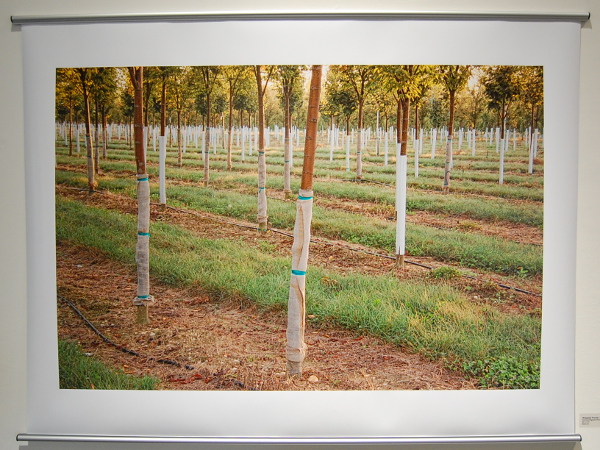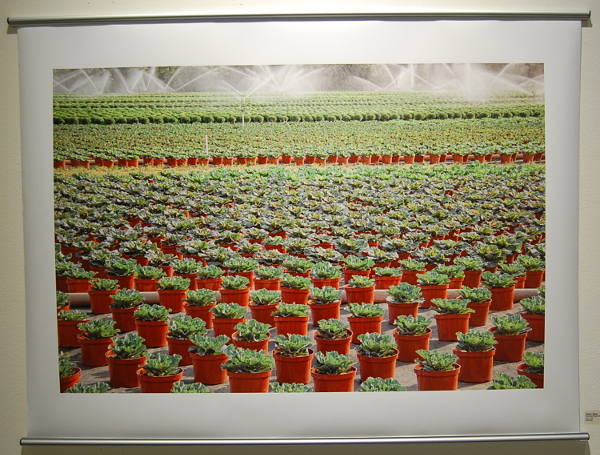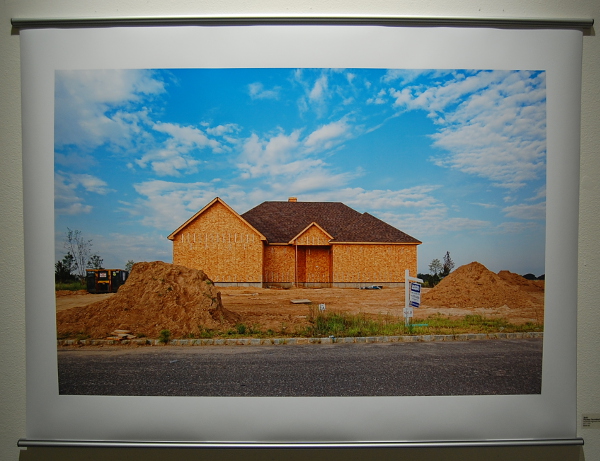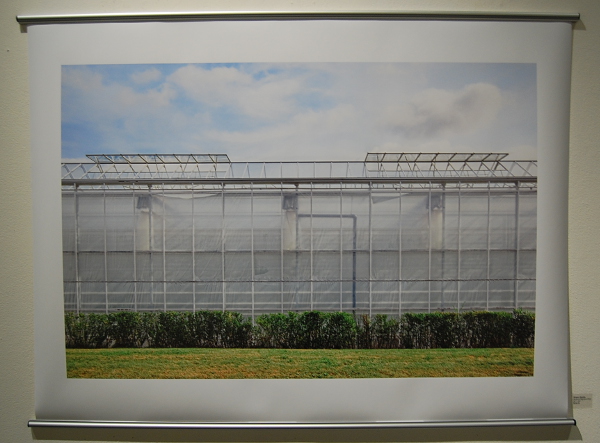
John Woodin examines cultivated landscapes at Crane Arts
In our contemporary world, the lines between the natural and artificial are sometimes not as clear as they are made out to be. Old growth forests have relented their ubiquity in much of the continental United States and worldwide, giving way to human-planted stands of trees and agricultural development. John Woodin takes to the Hall of the Crane Arts Building for a solo installation presented by InLiquid. Entitled “Un-natural Landscape,” this show focuses on the unique relationships that some plants share with humans by way of their cultivation.
Upon observing the 16 photo prints Woodin places down the hallway of Crane Arts, it is immediately apparent that they depict greenhouses, nurseries, and farms – not forests or fields. Most of the plants are grown in distinct rows and organized patterns as opposed to the more irregular and unpredictable distributions found in nature. Here, we find saplings as they stand with their roots packed into neat little pouches, ready to be buried in the ground or freshly planted young trees with their trunks wrapped in plastic and mesh.
The result of booming population and increased industrial efficiency throughout the 20th century did not spare agriculture… in fact quite the contrary. With urban centers growing, so too did farms, and where natural woodlands diminished, they were supplanted by crops for use by people and eventually even forests grown at the behest of earth’s primary primates. Very little of the planet remains untouched by our hands, and as a result, much of the life we see around us has been introduced and administered by the needs and desires of our species.
John Woodin, “Green Army.”
One of the most riveting photographs in the exhibition is “Green Army,” which shows a vast stretch of potted cabbage-like leaves sprouting from reddish, synthetic pots. These containers are intricately staggered like bricks, and far off in the background, machines spray water over the expanse. While it would be easy to assume that so much green would indicate a the domain of Mother Nature, the human influence here is unmistakable and even jarring.
John Woodin, “Sold Former Farmland.”
While many people urge greener or more organic lifestyles, often rightfully so, to what extent can we actually distance ourselves from the mechanics of the foods we eat or the textiles and building materials we require? Regardless of how one approaches the topic, it is clear that we have moved well beyond the time that we can supply seven billion humans without orchestrating the lives of countless other creatures. Aside from minimizing environmental risks or the suffering of our fellow lifeforms, we are left with little choice but to maintain some degree of control over the plants we grow in order to survive.
John Woodin, “Green House.”
Amidst new housing developments and decaying abandoned ones, life takes the forms of soon-to-be fertilized lawns and slowly encroaching weeds, respectively. Elsewhere, neatly trimmed bushes border the metallic framework of greenhouses that grow crops for consumption, rather than aesthetically sound landscaping. These scenes of contrast contain many layers of questions and concerns surrounding the augmentation of nature and the desires of humankind. Certainly John Woodin has spent a great deal of time considering the implications of his images, and by sharing them with us, he prompts an important conversation that needs to continue. “Un-natural Landscape” will be on display at Crane Arts through March 8.
Crane Arts is located at 1400 N. American St., Philadelphia; [email protected]; cranearts.com.
Recent Content
-
Artsarticle ·
-
Artsarticle ·
-
Artsarticle ·



